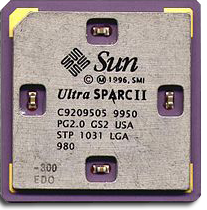 SPARC Emulators are great because the original SPARC machines are so few and far between not to mention expensive (orginials.) SPARC stands for Scalable Processor Architecture and is an ISA (RISC Instruction Set Architecture) that was developed by Sun Microsystems in the late 1980’s. SPARC’s design and architecture were originally used in the Sun 4 Workstation and servers from the same era. The previous processors were the Motorola 6800s. As time went on SPARC Processors were incorporated in additional servers such as the SMP and CC-NUMA and were, surprisingly enough, created to be used in 64-bit systems.
SPARC Emulators are great because the original SPARC machines are so few and far between not to mention expensive (orginials.) SPARC stands for Scalable Processor Architecture and is an ISA (RISC Instruction Set Architecture) that was developed by Sun Microsystems in the late 1980’s. SPARC’s design and architecture were originally used in the Sun 4 Workstation and servers from the same era. The previous processors were the Motorola 6800s. As time went on SPARC Processors were incorporated in additional servers such as the SMP and CC-NUMA and were, surprisingly enough, created to be used in 64-bit systems.
SPARC International opened the scalable processor architecture to be open source and is fully operational and non proprietary. Come March 2006 Sun Microsystem came out with the UltraSPARC T1 microprocessor and it was also open-source. The very next year in 2007 Sun released the UltraSPARC T2 processor and its open source cousin the OpenSPARC T2. The latest are the SPARC64 Vlllfx out in 2009 and the SPARC T4 which came in September of 2011. The two latest releases both have 8 cores! The SPARC64 clocks in at 2.0GHz and the T4 at 2.5GHz.
SPARC has been licensed to a variety of different companies to be used in their products such as: Weitek, Solbourne Computer, Scientific Atlanta, Parse Semiconductor Company, Ross Technology, Prisma, Metaflow Technologies, Meiko Scientific, Magnum Semiconductor, LSI Logic, Hyundai, HAL Computer Systems, Fujitsu, Fujitsu Microelectronics, Elbrus, Cypress Semiconductor, C-Cube, Bipolar Integrated Technology aka BIT, and Afara Websystems to name a few er a lot.
Having a SPARC Emulator is an idea that would be convenient for many people. Many people are hoping for a SPARC Emulator that would be good enough to run Solaris or SunOS. So far the closest we have to that is the QEMU which many say isn’t good enough. SimlCS emulates the SPARC platform and can be found Here.
